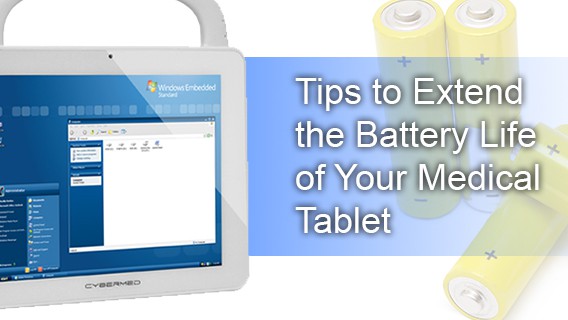It’s a simple but undeniable truth that no technology will last forever. Even something as well-manufactured as a medical-grade PC will inevitably degrade and fail. A significant part of being a responsible computer owner is knowing when to replace your old device. Just as important is knowing how to do so in a way that protects your data and the environment simultaneously.
In today’s article, we’ll review the signs of a computer’s end of life and the steps needed to retire it correctly.
Identifying When A PC Needs To Be Retired
Article Guide
Computers are playing against time on two different fronts. On one end, daily operations’ natural wear-and-tear take their toll on the device. While medical-grade computers are engineered to be as durable as possible, they are not invincible. When devices fail, their users will be the first to notice.
On the other end, the constant march of technology means that certain designs and form factors inevitably get left behind and go unsupported; when was the last time you saw someone running Windows 98 on their computer, for instance?
User Complaints
Users aren’t shy when it comes to complaining about faulty hardware. The first sign of a PC reaching the end of its service will often be a staff member saying, “It feels slow” or “It keeps crashing on me.” These issues typically indicate failing hardware or outdated software. While some of these issues can be resolved, a dying motherboard or CPU will often require a total replacement of the device.
Compatibility and Support Issues
Another strong sign that it’s time to retire your PC is when it can’t support new software or equipment. After all, there’s no sense in keeping a medical-grade computer if it can’t support the EMR your hospital is switching to. Likewise, if it no longer receives software updates from the original manufacturer, it will rapidly become a liability instead of an asset.
While these issues are not as prevalent in healthcare as in other sectors, the ongoing march of technology ensures that you will have to order replacements at some point.
Planning for End of Life
Just like when purchasing new medical-grade tablets and computers, you need a plan for retiring your equipment. Doing so will let you phase out dead or dying computers responsibly rather than having a haphazard mix of functioning and non-functioning devices.
Use Asset Tracking to Monitor Your Equipment’s Age
Many hospitals use asset tracking systems like barcode scanners and RFID tags to locate and assign equipment around a hospital. Adding a section in these systems for the device’s age should also be simple enough. You should also maintain a similar system for software, tracking when your system started using particular programs and if or when updates are scheduled for it.
Stay Up to Date on End of Support Announcements
At a certain point, it simply becomes unprofitable for hardware manufacturers and software providers to continue supporting an obsolete product, especially when they have new and better offerings. Whenever a company decides to end support for their products, they will release an announcement with the planned date included.
For example, Microsoft will stop supporting Windows 10 on October 14, 2025. Windows 10 will still technically be functional, but it will no longer receive software updates, meaning it will fall under the category of legacy software and become a potential hazard for cybersecurity. Staying current on these updates is critical for understanding when to retire your equipment.
Disposing of PC Hardware at the End of Its Life
Once you know that it’s time to dispose of your PC hardware, there are several critical steps you’ll have to take. Given the regulations surrounding data privacy and cybersecurity in healthcare, most of these steps concern what to do with the data stored on that computer.
Back Up Critical Files
While cloud-based storage has lessened this requirement, it’s still often necessary to back up critical files stored on the computer you’re about to decommission. Take a thorough search through the device’s files and make sure that anything vital is transferred to another storage device or medium before moving forward.
Cancel or Transfer any Software Licenses
Most commercial software requires a paid license or subscription to use. Since you don’t want to continue paying for a license on a device you’re no longer using, make sure you cancel any payments of subscriptions associated with the computer in question. Sometimes, you can also transfer the license to a new replacement device.
Wipe Your Hard Drives
Many people think deleting data on a drive is enough to destroy it permanently. Unfortunately, tech-savvy individuals can still recover data on a drive after it’s been deleted. Wiping a drive is the best way to purge all information permanently. Windows comes with built-in tools for doing just that.
Physically Destroy the Drive
If you want to be sure that no one will ever be able to access the data on a drive, outright destroying it will guarantee they can’t. While it prevents you from re-using that drive in another device, you won’t have to worry about missing a step in wiping data. A hammer is easy (and potentially therapeutic), but there are also industrial-grade shredders that will grind a drive down into scrap metal.
Dispose of Your E-Waste
If the PC is no longer functional and can’t be reused or donated to charity, it must be recycled. Electronics contain hazardous materials that can’t be allowed to leak into the environment unchecked, so local governments often offer E-waste recycling services. These services will ensure that your decommissioned PC is dismantled correctly and its components recycled into new electronics.
Closing Thoughts
Knowing when and how to phase out your medical-grade computer can be as important as purchasing a new one. Handling a computer’s end of life is critical not just for preserving patient privacy but for protecting the environment as well.
If you’re phasing out old medical computers and looking for replacements, contact the team at Cybernet Manufacturing. We’d be happy to explain how our design features contribute to our computers’ long, effective lifespan and how we can support legacy devices even after the original manufacturer ends support.
Join the conversation and connect with us on this and other relevant topics – Follow us on Facebook, Twitter, and LinkedIn.
Mobile Medical Applications of the Industrial Computer: The Case of the Medical Emergency Vehicle
February 15, 2016
The demands of modern mobile healthcare are much more challenging than those of most other industries. This is where lives are at stake, and emergency situations arise at little to no notice. In recent years,…
0 Comments4 Minutes
Tips to Extend the Battery Life of Your Medical Tablet
August 9, 2015
Professionals in different industries have come to rely on electronic devices to carry out a variety of tasks. The use of devices like all-in-one computers or electronic tablets have simplified a variety of tasks that…
0 Comments3 Minutes
You Can't
Learn from a Pop-up
But we can deliver knowledge to your inbox!
We dive deep in the industry looking for new trends, technology, news, and updates. We're happy to share them with you.
Knowledge, News, and Industry Updates Right in Your Inbox




